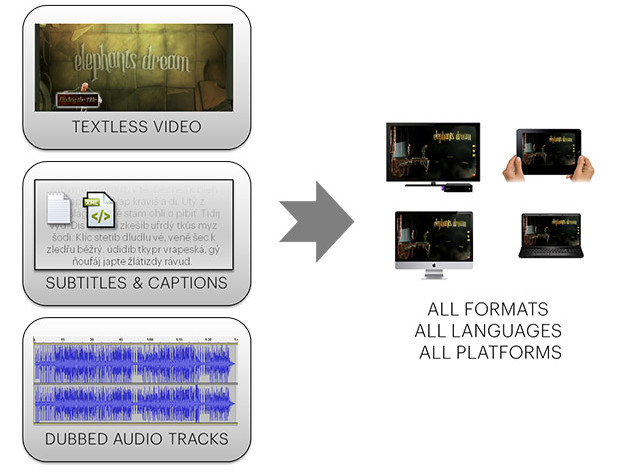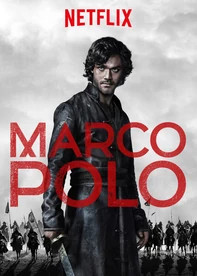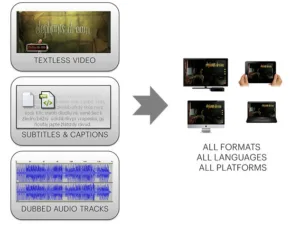HD content today is delivered to a dizzying array of devices in a multitude of formats. While we are not there yet for the delivery of UHD-4k content, many of the same technologies and platforms will be used for 4k. Now we have learned that Deluxe is leveraging its existing OnDemand services to offer 4k-UHD content services to companies to fill this pipeline. The company is already behind the delivery of 4k-UHD content from DirecTV, Samsung, Netflix and LG, for example.
 Deluxe is intended to be a full service option for HD, and now, UHD content delivery. With Deluxe behind the operation, service providers can launch 4k-UHD services immediately – and without additional infrastructure investment or workflow costs. This helps them mitigate the risk of investing in new technologies too.
Deluxe is intended to be a full service option for HD, and now, UHD content delivery. With Deluxe behind the operation, service providers can launch 4k-UHD services immediately – and without additional infrastructure investment or workflow costs. This helps them mitigate the risk of investing in new technologies too.
To learn more, I had a wide ranging telephone conversation with Chris Pulis. While Pulis is now a VP for worldwide operations for delivery of linear services and for content security compliance, he was formerly Deluxe’s Sr. Director, UHD operations & business development.
He started out by noting that it has been a disconcerting time with the Sony security breach which raised numerous concerns about security. He said Deluxe follows rigorous, industry-leading security protocols to protect content in its facilities, but that may not be the case with all entertainment companies. “Security leaks and piracy are not only bad for the owner directly affected, it is harmful to the entertainment economy as a whole; affecting livelihoods in every segment of our business from content producers to service providers alike. 2015 will certainly be a big year for increased awareness in the area of content security”, commented Pulis.
Pulis says that Deluxe started developing its 4k workflows way back in 2006 when it did the first restoration of the movie The Sand Pebbles with Steve McQueen. The learning curve was steep and required a lot of infrastructure upgrades. For example, the company had to optimize fiber channel storage to enable playback of 4k content and they had to store the content in contiguous data block (no fragmentation) on the hard disc. This facility in Burbank is now capable of 8k processing as well.
One way Pulis likes to characterize the facility is as a 100K square foot (9,500m²) content pipeline with a transformation engine in the middle. By this, he means that the firm can ingest content in any format from film to digital; compressed or uncompressed. The output can be nearly any format as well, from DPX or DCPs to ProRes to Blu-ray or UltraViolet, and even the new IMF format.
However, each customer will have a certain set of specifications for not only the format they want, but for some of the specifics of the rendering of the format. “We have about 900 distributors and content owners as our customers and about 2000 specifications”, noted Pulis. “We have an onboarding team that checks to see that the deliverables going to customers matches their specification requirements”.
And guess what? The UHD content deliverables going to Samsung, LG, Netflix and DirecTV all have different specifications. According to Pulis, the company started working with Samsung about a year ago on developing its HEVC specification. A specification was needed to match the decode capabilities in the Samsung UHD TV, while finding the right balance in image quality, file size and other factors. For example, initial sets could only support 8-bit processing but current ones can do 10-bit. They also needed a way for the TV remote to manage the selection of the subtitles. Today, that spec calls for encoding at 23.98 fps, at 10-bits per color and 4:2:0 color sampling at an unspecified data rate.
Pulis also noted that the company now has a process in place for high dynamic range too. Deluxe is a partner with Dolby so would be a competitor with the Technicolor HDR process. To master HDR content from digital cameras, it needs to go back to the camera images themselves in order to gain access to the 12-14 stops of original dynamic range, so it can be a time consuming process. Alternatively, high quality films have wide dynamic range and can be scanned to create an excellent starting point for the re-mastering.
We also discussed the IMF or Interoperable Master Format. As we reported from the SMPTE fall conference, Netflix is a big supporter of this standard. Many see it as a great way to contain the explosion of versioning that has occurred in the last 10 years.

The idea behind IMF is to create a file structure with the highest quality video, audio, metadata and other information such as subtitles all in one big container. This can then be used to create all the lower resolution and version derivatives. The content owners would have keys that allow certain features to be unlocked if the distributor had the rights to do that.
While the format was developed more as a post house to post house transfer standard, it has evolved to become a solution to “versionitis”. Pulis noted that Netflix is clearly leading in this area and is already using the format for its versioning. In March, Netflix will also be able to accept the IMF 2+ Extended specification, which reportedly will be used for the in-house content, Marco Polo. While Pulis notes that others are not jumping onboard just yet, he is optimistic that they will.
Deluxe is certainly one of the leading providers for the emerging 4k UHD ecosystem. Deluxe’s 4k UHD capabilities encompass all the enhanced workflow functions and processes for authenticated internet delivery of 4k content directly to UHD-compatible televisions and mobile devices. That includes digital re-mastering of 4k content, conversion and HEVC encoding, transcoding, DRM, and CDN hosting and delivery. – Chris Chinnock

